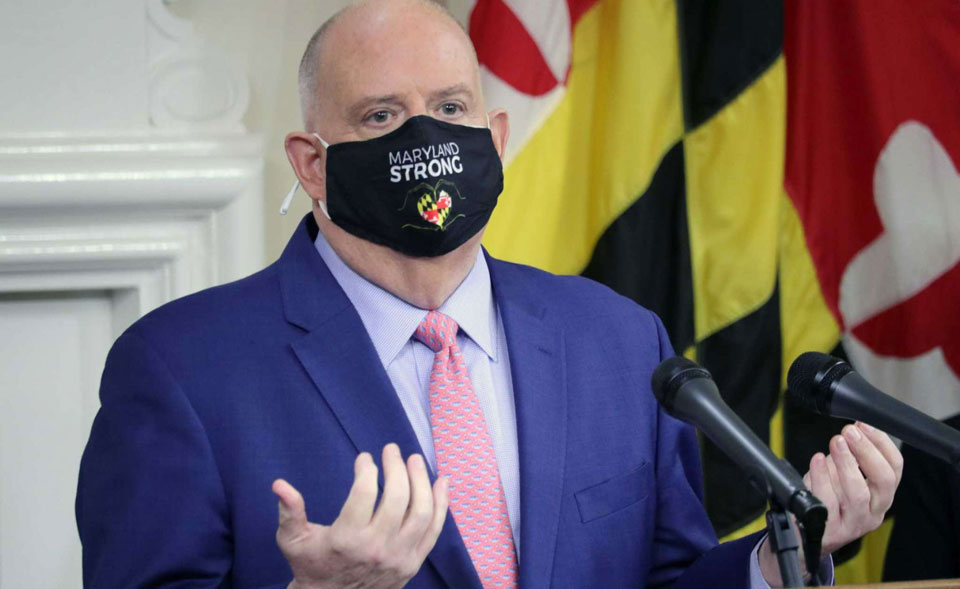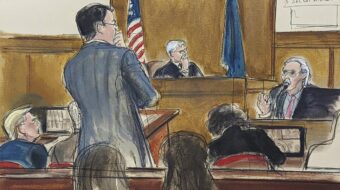
WASHINGTON—One top agency overseeing the fight against the coronavirus pandemic, the federal Centers for Disease Control, is reportedly pushing for tougher measures—and using more people—to battle the modern-day plague, even as the GOP Trump regime refuses to support more money for the fight.
That leaves the nation’s governors and mayors holding the bag in the anti-coronavirus war, but without the money to hire and pay workers to battle the virus, officially called Covid-19.
The reports, which the CDC did not confirm, came as the agency’s own scientific advisory committee on the vaccines and immunizations recommended the nation’s 20 million to 24 million health care professionals—from doctors and RNs down to orderlies and other hospital staffers—should be “Priority 1” for vaccines, expected to be rolled out later this month for a massive clinical trial.
Long-term care and nursing home workers and residents would be right behind them, as CDC’s “Priority 1A” for vaccination.
Everyone else, including Fire Fighters and emergency medical services workers—who drive two-thirds of the ambulances to homes and apartments to tend to and transport coronavirus victims to hospitals—trail behind, though it wasn’t for lack of IAFF trying to also be just behind the health care workers.
“We are using the principles of maximizing benefits and minimizing harm, maximizing benefits and minimizing health inequities,” panel chair Dr. Jose Romero, Arkansas’s Chief Medical Officer, told reporters on Dec. 1, in explaining the decision of the Advisory Committee on Immunization Practices, a group of MDs and public health specialists.
CDC, which has ultimate say in setting vaccine priorities, usually follows the committee’s advice. There was little question, after prior recommendations to the committee, that RNs and other health care workers would be first for vaccinations against the virus, given their constant exposure to its sufferers and resulting high positive test rates. The question was who would follow them, and in what order.
But the health care workers shouldn’t start jumping for joy yet, despite the panel’s decision and CDC’s advocacy of tougher measures. There may not be enough immediate vaccine doses to go around.
Gov. Larry Hogan, R-Md., the new chair of the National Governors Association and an outspoken critic of GOP Trump regime inaction against the coronavirus plague, told a Dec. 1 news conference his state expects a first shipment of 155,000 vaccine doses, once the feds give the go-ahead for initial trials. That’s only half of what Maryland needs, Hogan added.
And while the prior congressionally passed Cares Act had money for vaccine research, those funds went to drug companies. The states, now forced to be in charge of vaccinations, are shortchanged due to the GOP Senate majority’s refusal to forward funds to them after revenues tanked due to anti-virus closures.
Studies show that among worker groups, health care workers disproportionately test positive for the coronavirus, which has sickened 13.73 million people from March 13, the day the pandemic was declared, through 10 am Dec. 2. That includes 244,945 health care workers, 858 of whom have died.
There is also disturbing news from the CDC regarding that declaration of March 13 as the official start of the pandemic in the U.S. with the CDC saying Tuesday that the virus may have been spreading in the U.S. three months before that, in December of 2019. Blood samples taken around the U.S. in December of 2019 are showing up positive for the coronavirus, the CDC said. With the Trump administration in charge of the response to the virus almost anything, of course, can be expected to have happened.
National Nurses United, in any case, has led the charge for more worker protection against the virus, even before the pandemic was declared. It has concentrated on gaining more personal protective equipment (PPE), such as N95 masks, ventilators and protective uniforms, plus sanitizing.
The question the advisory committee tackled was who would join the health care workers atop the vaccination line. It recommended long-term care and nursing home residents and workers would, since nursing home residents account for 39% of the nation’s 270,728 coronavirus deaths and the homes are sites of huge outbreaks and multitudes of “hot spots.”
The Fire Fighters, in a Nov. 30 letter to the governors and state emergency management chiefs, argued both they and EMS workers should be, at worst, in “Priority 1A” for getting the vaccines, expected to be available for experimental trials by the end of December.
Great Britain OKd one vaccine, by Pfizer, on Dec. 2, with distribution schedules to begin there the following week.
Like the U.S., the UK said health care workers and nursing home workers would be first to get it. Pfizer and two other drug-makers, Moderna and AstraZeneca, have applications pending before the federal Food and Drug Administration to start vaccination trials in the U.S.
“Adequately vaccinating firefighters and emergency medical responders will also allow such personnel to continue serving their communities during this medical crisis,” IAFF and its allies wrote.
“Absent adequate vaccination, responders will continue to be subject to lengthy quarantines when they are exposed to Covid-19-positive individuals, imposing significant costs on local governments as they backfill positions or operate understaffed, increasing response times and negatively impacting public safety,” IAFF added in its own letter accompanying the joint one.
IAFF estimates at least 17,000 of its members have had to self-quarantine after testing positive for it, and 19 have died. The EMTs’ association, the National Volunteer Fire Council, says 35 of its members have died.
But the committee’s decision left IAFF and other first responders behind, and at the whim of governors, mayors and public health officials. All the first responders were in a “Priority 2” tier on a Homeland Security Department priority list for vaccines the panel previously received. DHS added local officials could pick whom among first responders goes first for vaccines. Teachers are in DHS’s “Priority 3” tier.
Who gets the vaccine, and when, is important as the coronavirus plague is increasing nationwide. A federal map, leaked to Yahoo! News, plus accompanying data, showed skyrocketing infection rates from week to week and painted much of the country, especially stretching across the upper Midwest and Plains States, a complete dark red, showing the highest infection rates per 100,000 people.
IAFF and its allies, notably the emergency medical techs, argue that because in 65% of cases they’re rescuing coronavirus victims, then—crowded into an ambulance with them—taking them to hospitals so nurses can tend to them, the first responders should be, at worst “Priority 1A” for vaccination.
“We are vital parts of the national public health system and should be treated at the same priority as other front-line healthcare workers, and hospital staff,” their letter says. IAFF drafted the letter, and associations of fire chiefs, fire marshals and fire department volunteers co-signed it.
“The nation’s fire fighters, paramedics and EMTs serve as the first link in the Covid-19 response. These environments are unstructured, unprotected and place public safety personnel in close quarters with Covid-19 patients, causing increased exposure for the responder. Many Covid-19 patients are treated by a Fire Fighter, EMT or paramedic before they are transported to a medical facility for further care,” the four groups explained.
“And Fire Fighters, paramedics and EMTs often respond to emergencies unrelated to whether a caller has COVID-19 only to later learn the individual” they served “exposed them to the virus.”
“The National Academies of Science, Engineering and Medicine recommended fire and EMS personnel be Priority Tier 1A for receiving a Covid-19 vaccine. We are concerned states and local government may not adopt the recommendations of this esteemed panel, and instead relegate fire and EMS personnel to a lower priority tier,” their joint letter said.












Comments